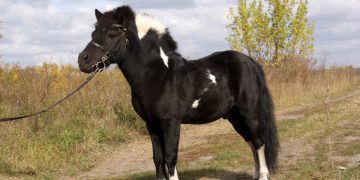Pig farming, or piggery, is one of the most profitable livestock ventures for small-scale farmers. Pigs grow quickly, have high feed conversion efficiency, and are in consistent demand for meat and byproducts. Starting a backyard pig farm offers an excellent opportunity for income generation and sustainable food production, even with minimal space. This guide will provide a comprehensive breakdown of how to set up, manage, and maximize profitability in small-scale pig farming.
Why Consider Small-Scale Pig Farming?
- High Market Demand:
- Pork is one of the most consumed meats worldwide, creating year-round demand.
- Specialty markets for organic and free-range pork are growing rapidly.
- Quick Returns:
- Pigs reach market weight (220–250 pounds) in 5–7 months.
- Sows can produce multiple litters annually, multiplying revenue potential.
- Low Space Requirements:
- A small backyard is sufficient to start with 2–5 pigs.
- Sustainable Practices:
- Pigs consume a variety of feeds, including food scraps, reducing waste and feed costs.
Initial Setup Costs for Backyard Pig Farming
1. Land and Infrastructure
- Space Requirements:
- Allocate 20–50 square feet per pig for housing and movement.
- Outdoor runs or pens can supplement their living area.
- Housing:
- Simple wooden or concrete structures to provide shelter from extreme weather.
- Estimated cost for a basic pig pen: $300–$1,000, depending on materials and size.
- Fencing:
- Use sturdy fencing to contain pigs and protect them from predators.
- Cost: $100–$300 for a small area.
2. Piglets or Breeding Stock
- Piglets:
- Cost ranges from $50–$150 each, depending on breed and weight.
- Starting with 2–5 piglets is ideal for beginners.
- Breeding Stock (Optional):
- A mature sow or boar costs $300–$800, but this allows for self-sustaining pig farming.
3. Feeding Equipment
- Feeders:
- Durable troughs or automatic feeders: $50–$100.
- Waterers:
- Invest in nipple drinkers or trough systems: $30–$80.
4. Feed Costs
- Starter Feed:
- Pigs require high-protein feeds for the first 2–3 months.
- Monthly cost: $30–$60 per pig.
- Grower Feed:
- Transition to lower protein feeds as pigs approach market weight.
5. Miscellaneous Costs
- Veterinary Care:
- Deworming, vaccinations, and routine health checks: $50–$100 per pig annually.
Step-by-Step Guide to Starting a Backyard Pig Farm
Step 1: Choose the Right Breed
Selecting the right breed impacts growth rate, feed efficiency, and profitability.
- Popular Meat Breeds:
- Yorkshire: Fast growth and high-quality meat.
- Duroc: Known for excellent meat marbling and temperament.
- Landrace: Ideal for breeding, with high litter sizes.
- Berkshire: Premium pork quality for niche markets.
- Hybrid Breeds:
- Often used for commercial farming due to their feed efficiency and adaptability.
Step 2: Build the Pig Housing
- Design Considerations:
- Ensure adequate ventilation to reduce ammonia buildup.
- Provide shaded areas to prevent heat stress.
- Bedding and Waste Management:
- Use straw, wood shavings, or sand for bedding.
- Regularly clean pens to maintain hygiene and reduce odors.
Step 3: Feed and Nutrition Management
- Feed Composition:
- Starter feed: High protein (18–20%) for piglets.
- Grower feed: Moderate protein (14–16%) and higher energy content for finishing pigs.
- Supplementary Feed:
- Incorporate vegetables, grains, and kitchen scraps to lower costs.
- Provide calcium and phosphorus supplements to ensure strong bone development.
- Water Supply:
- Ensure clean, fresh water is always available.
- Pigs can consume 2–5 gallons of water daily, depending on size and weather.
Step 4: Breeding and Reproduction
- Mating:
- Sows can be bred at 8–9 months of age.
- A typical litter size ranges from 8–12 piglets.
- Gestation Period:
- Approximately 114 days (3 months, 3 weeks, and 3 days).
- Weaning:
- Piglets are weaned at 6–8 weeks of age and transitioned to grower feeds.
Step 5: Health and Disease Management
- Vaccination Schedule:
- Protect pigs from common diseases such as swine fever, pneumonia, and foot-and-mouth disease.
- Parasite Control:
- Deworm pigs every 2–3 months.
- Biosecurity Measures:
- Limit farm visitors and maintain clean facilities to prevent disease outbreaks.
Profitability of Backyard Pig Farming
Revenue Streams
- Meat Sales:
- Market-ready pigs weigh around 220–250 pounds.
- Selling price: $2–$4 per pound (live weight).
- Breeding Stock Sales:
- Sell piglets at $50–$150 each.
- Organic Manure:
- Pig manure can be sold to gardeners and farmers or used in composting.
Cost and Revenue Breakdown
| Category | Cost (Per Pig) | Revenue (Per Pig) |
|---|---|---|
| Piglet Purchase | $100 | — |
| Feed (6–7 months) | $180 | — |
| Veterinary Care | $50 | — |
| Other Costs (Utilities) | $20 | — |
| Total Cost | $350 | — |
| Meat Sale Revenue | — | $600–$1,000 (at $3/lb) |
| Profit (Per Pig) | — | $250–$650 |
Challenges and Solutions in Backyard Pig Farming
- Feed Costs:
- Feed accounts for 60–70% of production costs.
- Solution: Use food scraps, forage, and locally sourced grains to supplement feeds.
- Disease Outbreaks:
- Pigs are susceptible to diseases that can wipe out entire herds.
- Solution: Implement vaccination schedules and strict biosecurity measures.
- Environmental Concerns:
- Odor and waste management can be challenging in small spaces.
- Solution: Regularly clean pens and compost manure for reuse.
Tips for Success in Small-Scale Pig Farming
- Start Small:
- Begin with a manageable number of pigs to gain experience before scaling up.
- Market Research:
- Identify potential buyers, such as local butcher shops, farmers’ markets, and individual consumers.
- Diversify Income:
- Sell not just meat but also breeding stock and organic manure.
- Keep Records:
- Track feeding schedules, growth rates, and expenses to optimize operations.
Conclusion
Small-scale pig farming in your backyard can be a highly profitable and sustainable venture with proper planning and management. By starting with the right breed, creating optimal living conditions, and adopting cost-efficient feeding practices, you can build a thriving pig farming business that meets local demand for quality pork.
Whether you’re farming as a hobby or a full-fledged business, this guide equips you with the knowledge and strategies to succeed. Dive into backyard pig farming today and enjoy the benefits of this rewarding agricultural opportunity!

























